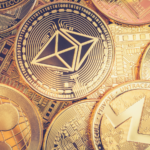The easiest way to illustrate how high Ethereum gas fees are is to compare them to other networks’ fees for the same transaction. For this example, we will use only one type of transaction: a swap.
Currently to exchange
one asset for another using a decentralized exchange (DEX) on Ethereum, the lowest fee is just under $10 USD, averaging over $10 and closer to $11. If you’re trading $100 of an asset, you’re paying about 10% in a transaction fee, which is extremely high.
When comparing this cost to other networks, it is even clearer that Ethereum has high fees. Let’s compare three other networks: Cardano, Solana and Polygon.
Currently, the fee for making an exchange on Cardano is less than 0.2 ADA, which is about 10 cents. The caveat here is that many DEXs on Cardano use a relayer system that costs 2 more ADAs, but even with that extra cost, it’s still $1 compared to $10.
On Solana, the fee for making a swap or any transaction is around $0.00001, widening the gap between Ethereum’s fees compared to other networks. On Polygon, which can be used to access many of the same Ethereum applications, the fee is less than a penny.
Clearly, Ethereum has a problem with high fees compared to other networks, so how can they be reduced?
How to save on gas tariffs
There are a few ways you can save money on Ethereum gas rates. This includes using other blockchain networks, checking a gas tracker, and, well, waiting for proof of the bet update.
Use other blockchain networks
This can mean a completely different ecosystem, like Solana, Binance Smart Chain, Cardano or Avalanche, or a level 2 solution on Ethereum like Polygon. All other ecosystems have essentially the same functionality as Ethereum, but with faster transactions and lower fees. Depending on your commitment to Ethereum as a project, they might all be good options to try as alternatives.
Polygon (MATIC) is probably the best option for an Ethereum user who is looking to stay within the Ethereum ecosystem. This is because the Polygon network is compatible with almost all the same decentralized applications (dApps) as Ethereum. This includes Uniswap and OpenSea, Ethereum’s most popular decentralized exchange and NFT market, respectively.
Alternatively, you can use Arbitrum or Optimism, two other layer-2s for Ethereum. Using a layer 2 blockchain network allows for faster transactions and lower fees because transactions don’t happen on Ethereum level 1 which can only process 15 transactions per second.
The disadvantage of Tier 2 is that you won’t have access to the same number of applications as the Ethereum mainnet, so you may have to connect Tier 1 and Tier 2 regularly (which also incurs fees!).
Check Ethereum Gas Tracker
If you are determined to stay within the Ethereum ecosystem and pay whatever fees you may need, you will need to keep an eye on the Ethereum Gas Tracker available on Etherscan.
The tracker will show you the average gas fee for low, medium and high priority transactions on Ethereum. It will also show you the average cost for various types of transactions on the network such as a swap on Uniswap or SushiSwap, a sale on Opensea or adding liquidity to various DEXs.
We’ve compiled a list of the best Ethereum gas trackers, so double check back to see if there’s one that might work particularly well for you.
It’s worth nothing that Ethereum fees tend to be cheaper during off-peak hours. You could make significant savings by making your transactions late at night or on the weekend.
Wait for ETH2
Patience will be required for this, but it may be the best option for those who truly believe in Ethereum in the long run. Once Ethereum is able to successfully implement the upgrade to ETH2 and become a proof-of-stake blockchain network, it will begin to reduce gas fees.
This is because there will be higher transaction throughput that will reduce transaction costs. However, full throughput capacity will take some time to fully implement on the blockchain, meaning fees may not be cheaper at the time of merging. The update seems to be in sight, with a tentative date of September 15, 2022.
Thoughts of closing: the merger is coming, but the fees will stay around
Ethereum’s upgrade to ETH2 finally seems to be coming. With this update, many of the tips on how to save on gas rates on Ethereum could become questionable. However, we can’t say how successful the update will be until it occurs.
In this case, it
might still be a good idea for Ethereum users to explore some of the options mentioned in this article, such as trying other networks or using the gas tracker. Overall, it will be good for cryptocurrencies if Ethereum launches its update successfully.


